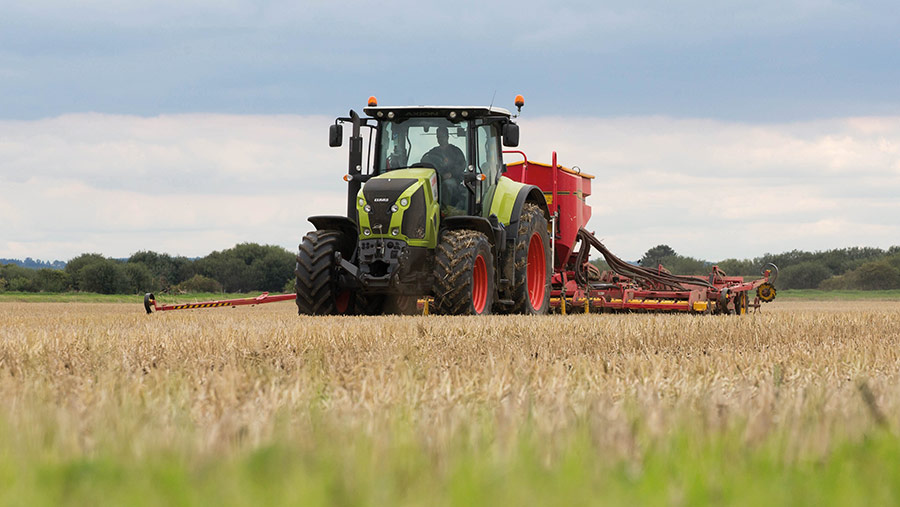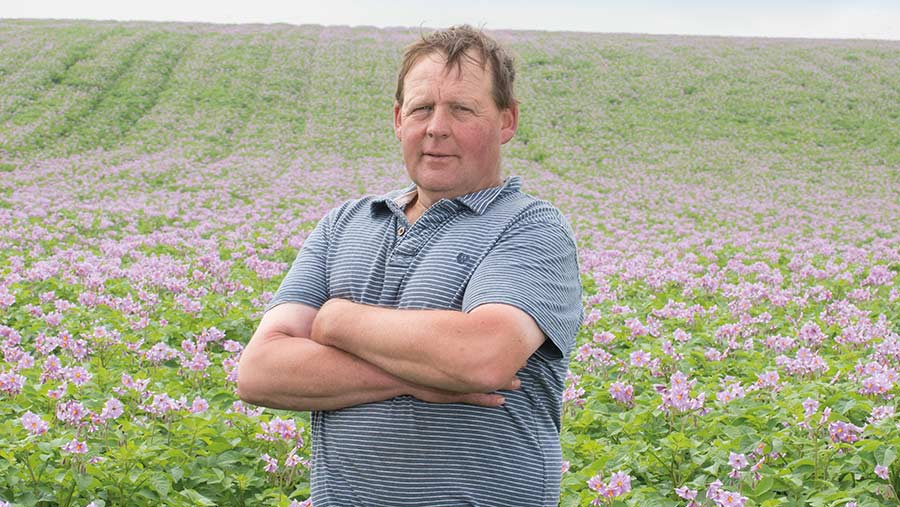Rotation planning: How should you plan for future changes?
 © Tim Scrivener
© Tim Scrivener Rotation planning for the next few years should start with the acknowledgement that nothing is cast in stone anymore, say agronomists and consultants.
After two consecutive wet autumns and dry springs, growers have accepted the need to be flexible and are already running a more fluid winter/spring cropping programme, often with some integration of stewardship.
The next few years are expected to see a continuing shift to longer rotations featuring more straw crops, less oilseed rape and the introduction of temporary leys or environmental fallows.
Catch and cover crops will also feature, to help with soil structure and nutrient cycling, in line with the need for delivering environmental benefits.
See also: 8 top tips for designing the right arable rotation
Rotational planning key points
- Try to net more than £800/ha
- Aim for 50% winter wheat
- Beans and oilseed rape are underperforming
- Look for opportunities to cultivate less
- Consider flexible stewardship options
- Assess agronomic, economic and environmental benefits
- Consider workload implications
Crop options
“For financial reward, winter wheat should be the mainstay at 50% of the rotation, but there’s a growing acceptance that there has to be an element of spring cropping,” says Patrick Stephenson, northern regional agronomist with NIiab Tag.
“And the challenge with that is getting consistent performance from it.”
With spring cropping comes the opportunity to include a cover crop and get good grass weed control, he notes, with the greater cultural benefits being seen with later spring drilling dates.
“Where grass weed control is an aim, you need to use as little soil disturbance as possible at drilling. Cultivating in the autumn and winter for spring crops, if it’s dry, is often a better option.”
Break crops present another performance challenge, with confidence levels falling in the past few seasons as their weather vulnerability was exposed, he notes.
“There is still an opportunity for oilseed rape, but it needs to be grown less often – on a one-in-six or eight basis. With that in mind, you need another break as well, which is where beans have a place.”
From a margin viewpoint, the two weakest crop links are beans and oilseed rape, highlights Jock Willmott of Ceres Rural.
Both crops have suffered in recent years and failed to give the consistent performance required.
“They do fulfil other aims,” he says. “Oilseed rape gives you a proper break and early entry for the following crop, while beans offer an inherent fertility benefit.
“Keeping wider gaps between these crops and growing smaller areas of them are ways of keeping them in the system.”
However, he believes that oilseed rape needs to be giving yields of 3.5-4t/ha to earn its place.
Oats have worked well for many, but should only be grown as a spring crop where black-grass populations are bad, while linseed is a crop that needs experience, says Mr Stephenson.
Grass can also be an important part of the rotation, he accepts, but only if you can use it as part of the farm’s productivity. “It returns organic matter to the soil but becomes a cash loser if it can’t be used,” he says.
Financial considerations
Against this background, the top performing arable farms achieved a gross margin of more than £900/ha for most crops they grew in 2020, according to AHDB Farmbench figures.
Data shows that a £600/ha gap has opened up between the best and the worst performers, with the farms in the top 25% having a further advantage in lower fixed costs.
With the phase-out of the Basic Payment Scheme in England, finding ways to maintain that level of financial performance is key – with a target of achieving an average gross margin of £800/ha across the whole rotation.
Where break crops aren’t working, an alternative is to look at a rotational environmental option, such as the extended overwinter stubble AB6, to do the same job, suggests Mr Willmott.
He says while the payment rate of £480/ha may not meet the £800/ha target, it does bring a benefit to the farm and means that you have some land which doesn’t require the same level of inputs or management.
“For financial reasons, the aim is to have at least 50% winter wheat,” he says. “For sustainability reasons, it’s desirable to have two break crops.”
He outlines two different ways of achieving this – one of which goes much further in providing the diversity that is likely to be required once the Environmental Land Management scheme has been rolled out (see panel, below).
Stewardship plans
Stewardship options in England should be in the mix at the planning stage, especially now that Defra has confirmed a 30% uplift in payment rates compared with income foregone.
“It makes them even more attractive,” says Mr Stephenson. “The winter bird food option AB9, for example, currently pays £640/ha and can be followed by spring barley.”
Two-year whole field options such as AB15 can be used to reduce risk, provide a guaranteed income and increase environmental delivery – without being affected by the weather.
“The introduction of a one-year fallow option would be ideal,” he remarks. “Getting a two-year option to fit, both practically and physically, can be tricky.”
“For an average gross margin of £785/ha, you could grow winter wheat in year one and two, followed by an extended overwinter stubble option in year three.
“It means one-third of your rotation doesn’t do much, but you do have to question how sustainable it is.”
The alternative is a six-year rotation which gives the option to include spring and cover crops, along with three winter wheat crops, and has an average gross margin of only slightly less, at £775/ha.
“By starting in year one with overwinter stubble, you have clean ground to go into winter oats in year two, followed by winter wheat, and then beans in years three and four.
“Year five and six would both be wheat, with both the beans and the second wheat giving the option of being spring drilled.”
That also gives an opportunity to use cover crops ahead of spring plantings, he notes.
With this in place and as the transition period progresses, machinery can be kept for longer. “You won’t be using it as hard.”
Other considerations include the effects of dropping oilseed rape on workloads. “Without it, you are flat out when harvest comes along. It’s also very hard to justify having winter barley in the rotation where you aren’t growing oilseed rape.”
Rotational options for England |
||
| Option one | Option two | |
| Year 1 | Winter wheat | AB6 Enhanced OWS |
| Year 2 | Winter wheat | Winter oats |
| Year 3 | AB6 Enhanced OWS | Winter wheat |
| Year 4 | Beans | |
| Year 5 | Winter wheat | |
| Year 6 | Winter or spring wheat | |
| Average gross margin | £785/ha | £775/ha |
Farmer Alan Steven, Fife, Scotland
Transition Farmer Alan Steven is lengthening the rotation on contract farmed land to make it more resilient to weeds and disease.
Mr Steven grows potatoes, parsnips, brussels sprouts and cereals at Kingsbarns, near St Andrews, Fife. He likes to keep a balanced seven-year rotation but took on 50ha of contracted land on a four-year rotation six years ago.

© Angus Findlay
“It was growing oilseed rape but the rotation was slightly tight,” he explains.
“We were still getting good yields but the four-year rotation was winter barley, oilseed rape, winter wheat, winter oats.
“You could see it was going to start running into problems with disease and volunteers so we stopped growing rape last year.
“Everything was autumn cropped – which in some ways helped the workload and gave us an early start to harvest.
“It meant the barley, rape and oats were all done and dusted fairly quickly, with rape stubble cultivated and waiting to sow wheat in it by September.”
Five-year rotation
Having dropped rape, Mr Steven says he will now stretch the rotation to five years and introduce cover crops before potatoes and brussels sprouts.
The next five years could see a rotation of spring barley, potatoes, winter wheat, winter oats, brussels sprouts.
“Then we will take a break because we don’t grow potatoes in less than one in six years.”

